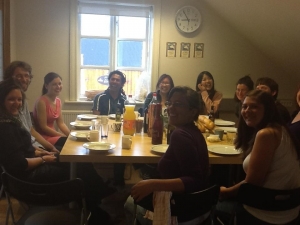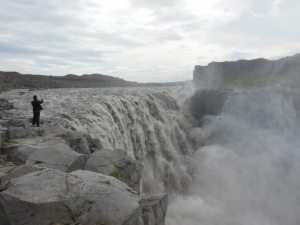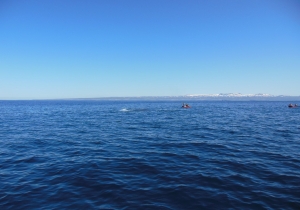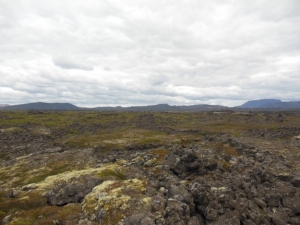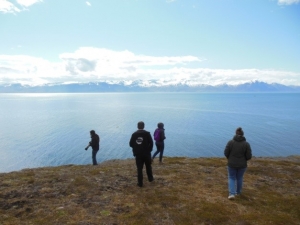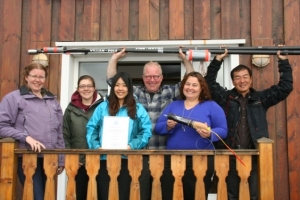I stayed in Iceland for three months to join the project that aims to reveal feeding behavior of blue whales using animal bone acoustic logger and get some experience that is useful for my study.
1. Our project
Highly productive Icelandic water which is affected by the Gulf Stream plays important role in marine ecosystems. This rich marine resources support fisheries of Iceland and feeding of blue whale (Balaenoptera musculus). They are considered one of the biological indicators of ecosystem’s stability because of their great biomass consuming. Recently, blue whales’ population tends to increase. Their population is estimated 10000-25000 in entire sea. However, it is only 3-11% of the population in 1911, and they still listed an endangered species to Red List of IUCN.
Blue whales are still quite mysterious species nevertheless they are well known as the biggest animal that has never lived on earth. We don’t know a lot of things: how they migrate, where the breeding area is, what species they feed, and so on. There are few tagging studies of blue whale during feeding. Calambokidis et al. (2008) detected only one loud call of a blue whale out of 13 successful tagging experiments using video-imaging tag recorder on the animals. They suggested that vocalizations are infrequent for feeding whales. Parks et al. (2011) supported this hypothesis.
During the period of my stay, we succeeded to attach tags to two individual and recognize one of them by photo-ID study. There are not clear immediate reaction of the whale after tagging could be observed. We used two different types of tags together for this research. One is animal bone sound recorder named AUSOMS-mini stands for Automatic Underwater Recording Systems-mini (Aqua Sound, Kyoto, Japan) which was invented by Japanese engineer for this project. It can resist hydraulic pressure of 500m depth, and record 25 hour’s non-compressed acoustic data continuously. The other is behavior data-logger (ORI400-D3GT, Little Leonardo, Tokyo, Japan) which can record 3 axis acceleration, depth and temperature, it invented in Japan as well. We obtained 21 hours and 47minutes recording from two individuals, 4 calls and some lunge feeding events which could be identified by flow noise recorded by the acoustic tag were detected. This result supports that producing calls during feeding is not frequently in blue whales as previous study suggested. This sound production rate is necessary to density estimation using acoustic method, and reveals the feeding behavior of blue whales. We will continue this tagging project another three year to get more information about blue whales biology.
2. My experience in Iceland
I stayed with a variety of national students in Húsavík, they have different opinion and background about biological aspect of whales and whaling. One of my Icelandic friend told me that one of the research concluded only 5 % of Icelandic people are eating whales regularly. They said most whales are eaten by tourist. I thought whale products are common and traditional in Iceland, but some people said it is not common food anymore. These are only few example of how Icelandic people think whaling. However, it is difficult to say these are representative opinion of how Icelandic are feeling about whaling. All the things I can say is there are a lot of sense of values even in one country. In Japan, we have the same problem about whaling that each person has each opinion. Whaling is not so close industrial for some Japanese because whether it is said that Japanese eat whales, it depends on the area and culture we live. However, a lot of people want to ask us what you think about whaling. I think we must know the situation of Japan and other countries which are whaling, at least.
From the end of June, I joined intensive graduate program that the studying marine mammals in the wild. This field course introduced the fundamentals of a suite of field methodologies used in the study of free-ranging cetaceans (whales, dolphins, and porpoises). We learned about the theory and practice behind different cetacean research methodologies: photo-identification, tracking cetaceans at sea, ship-based survey techniques, behavioral observational techniques, passive acoustic monitoring and dissection of porpoises. I am using acoustic method to monitor cetaceans in my master study, and I am an only student who studies about cetaceans in my laboratory. Therefore, I had never learned these kinds of methodologies before. Acoustic method is widely used for cetacean studies but it is much efficient if it combine other methodologies. If I will conduct another research in the future, these experiences which I learned during course must be helpful. The end of this course, we are divided into small groups which were interested in similar methodology or subject, and drew up the project, corrected data, and gave presentation about results. This experience was good to brush up my English skill.
It should not be forgotten how Icelandic nature are great. I took some trip with my friends who got in Iceland but it is difficult to describe. Iceland is not similar to anywhere. We can see and feel intact nature and living earth at every turn. It’s better to see some of my picture I attached and imagine. It was just amazing.
Saho Kameyama
私はWatanabe Trust Fundの奨学金により、アイスランドに3カ月滞在しました。その間、渡氷の目的であった動物装着型音響記録計を用いたシロナガスクジラの摂餌行動モニタリングプロジェクトに参加すると共に、私の研究において助けとなる様々な経験をさせていただきました。

